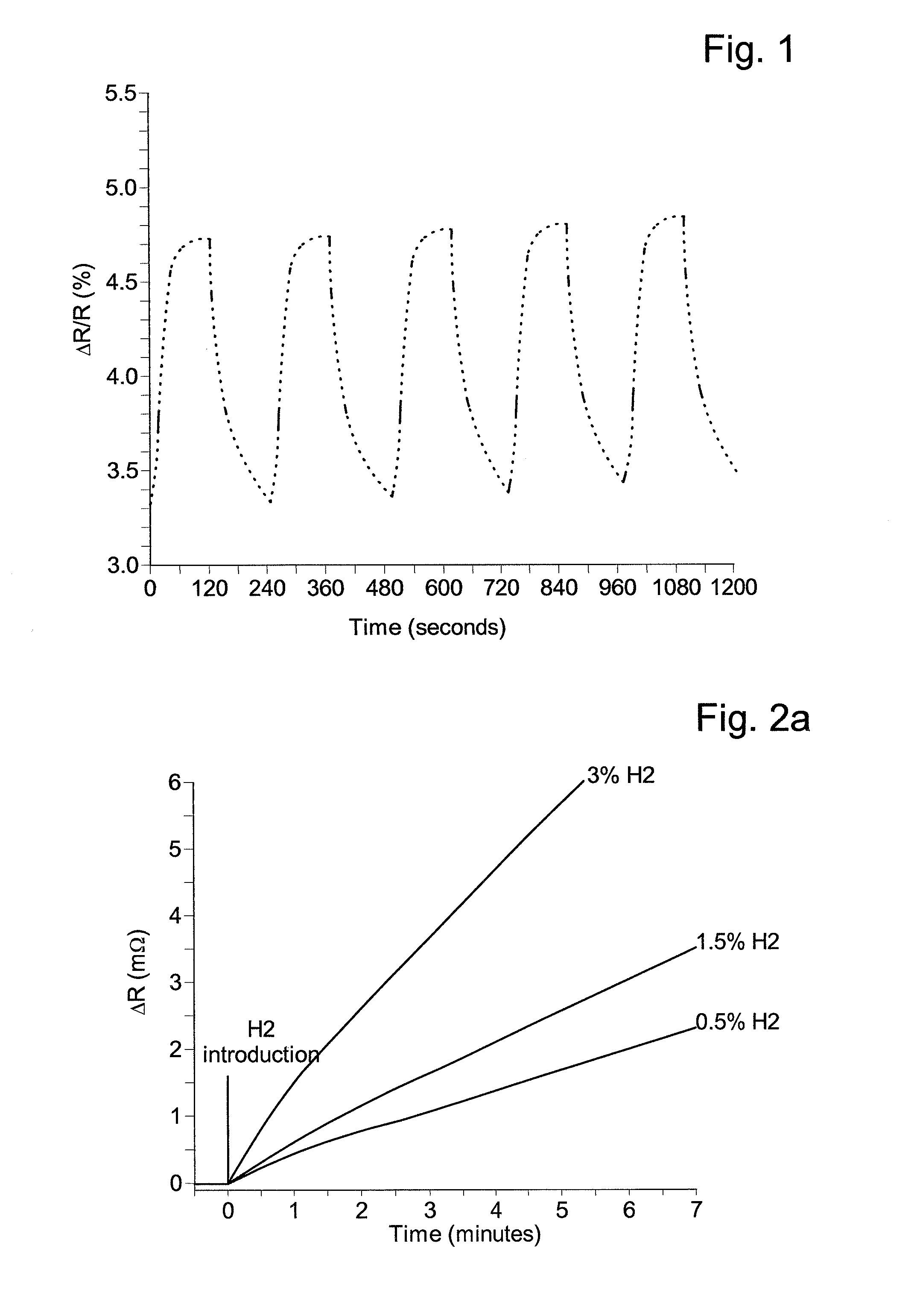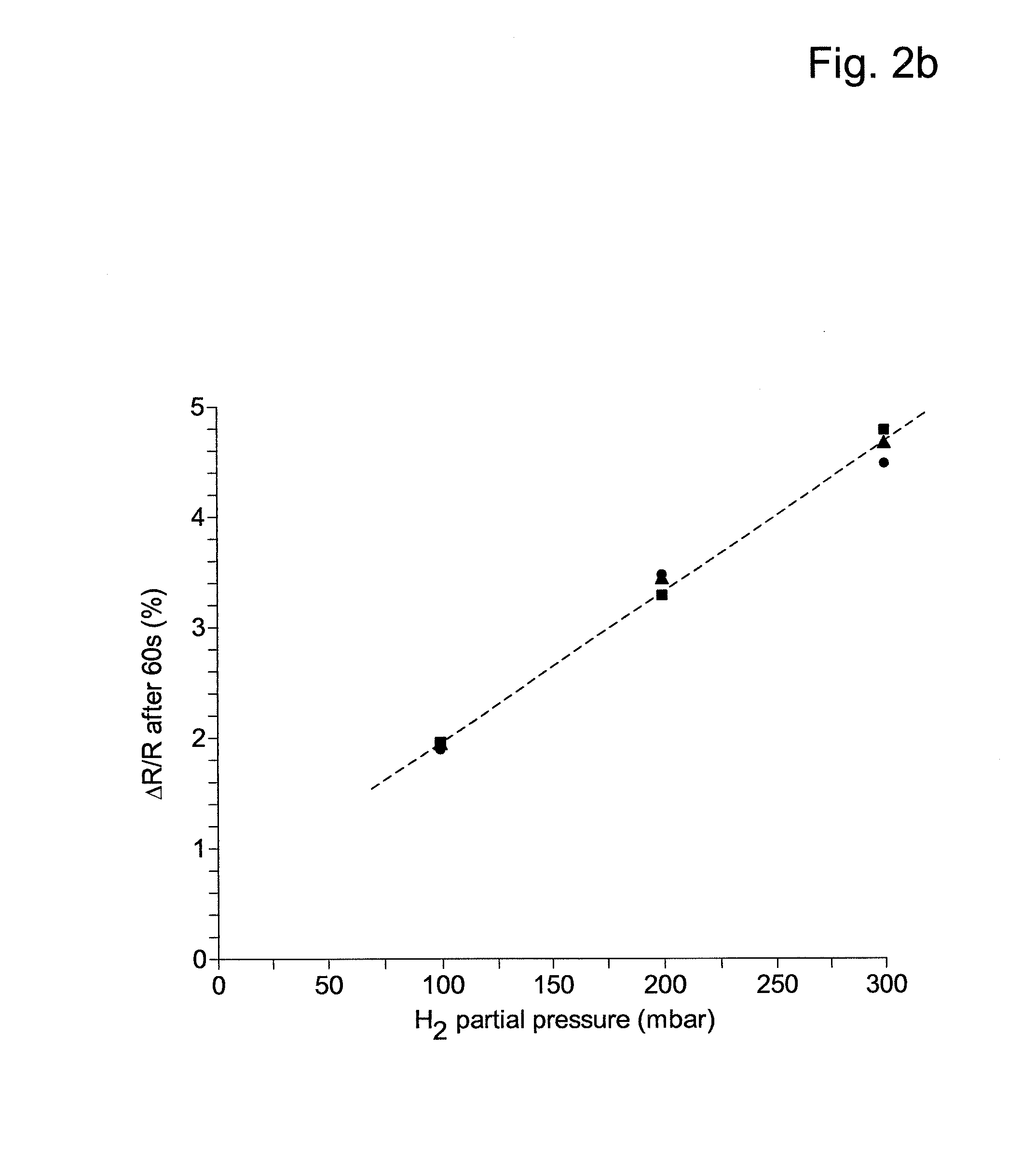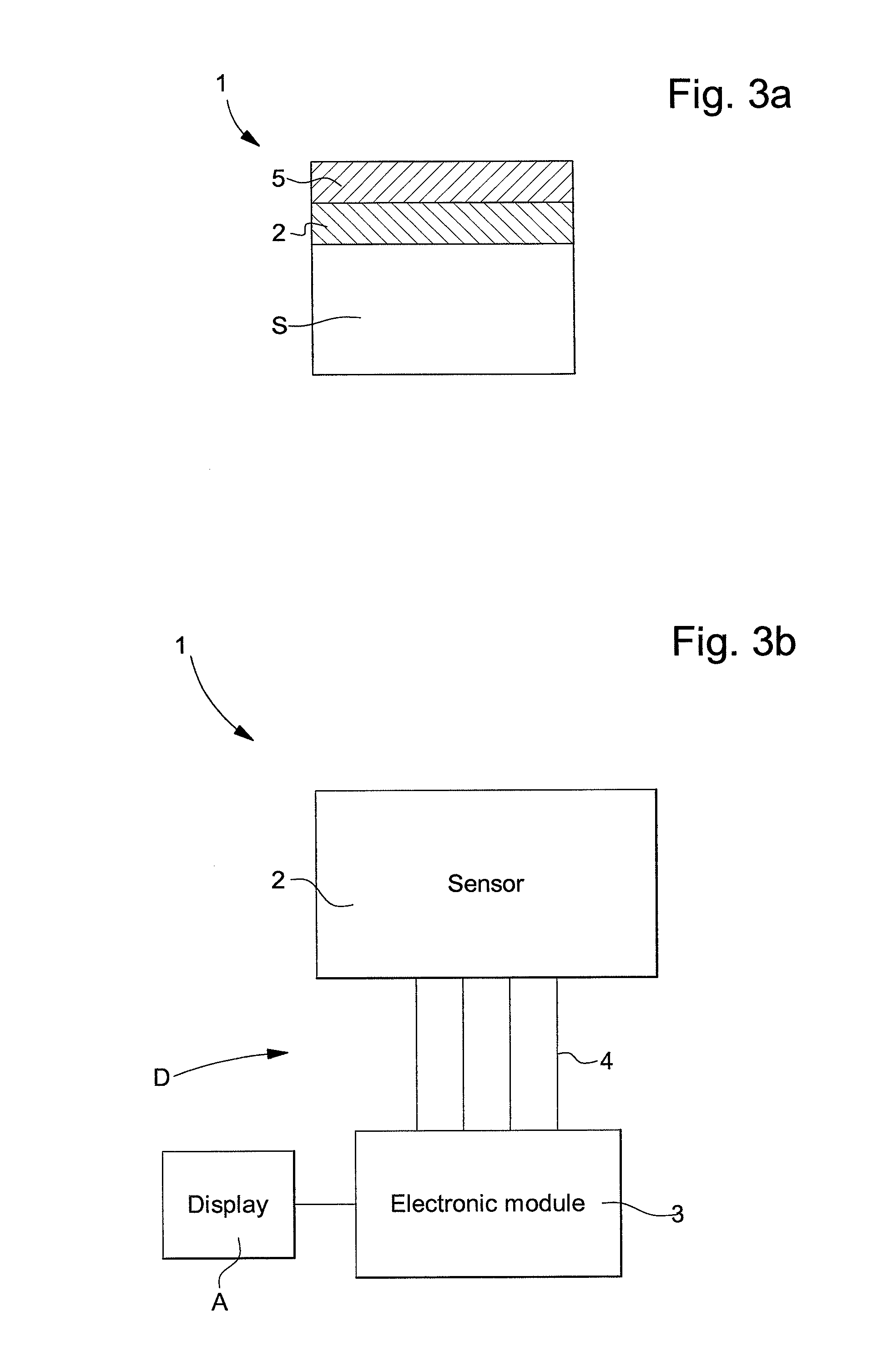Hydrogen sensor with active layer and method of manufacturing hydrogen sensors
a hydrogen sensor and active layer technology, applied in the field of hydrogen sensors and hydrogen detectors, can solve the problems of limited interest in mass market use and product manufacturing, and achieve the effect of simple implementation and good reproducibility
- Summary
- Abstract
- Description
- Claims
- Application Information
AI Technical Summary
Benefits of technology
Problems solved by technology
Method used
Image
Examples
Embodiment Construction
[0034]“Platinum group metals” (PGM) means: ruthenium, rhodium, osmium, iridium, platinum, rhenium, palladium, or a combination of these elements.
[0035]“Alkaline earth metals” means: magnesium, calcium, strontium, barium, or a combination of these elements.
[0036]Rare earth metals means: lanthanum, cerium, praseodymium, neodymium, samarium, europium, gadolinium, terbium, dysprosium, holmium, erbium, thulium, ytterbium, lutetium or a combination of these elements.
[0037]FIG. 3a shows an example of a sensor 1 according to the invention. It includes a substrate S, for example in the form of a film having, for example, a thickness of 100 microns, on which a thin active layer 2 has been deposited. Sensor 1 is connected via its layer 2 to an electronic module 3 arranged to measure a state parameter of the sensor, in this case the electrical resistance of layer 2, via four (or two in a variant) electrical connections 4 to form a detector D shown in FIG. 3b. In an alternative embodiment, elect...
PUM
| Property | Measurement | Unit |
|---|---|---|
| thickness | aaaaa | aaaaa |
| thickness | aaaaa | aaaaa |
| thickness | aaaaa | aaaaa |
Abstract
Description
Claims
Application Information
 Login to View More
Login to View More - R&D
- Intellectual Property
- Life Sciences
- Materials
- Tech Scout
- Unparalleled Data Quality
- Higher Quality Content
- 60% Fewer Hallucinations
Browse by: Latest US Patents, China's latest patents, Technical Efficacy Thesaurus, Application Domain, Technology Topic, Popular Technical Reports.
© 2025 PatSnap. All rights reserved.Legal|Privacy policy|Modern Slavery Act Transparency Statement|Sitemap|About US| Contact US: help@patsnap.com



